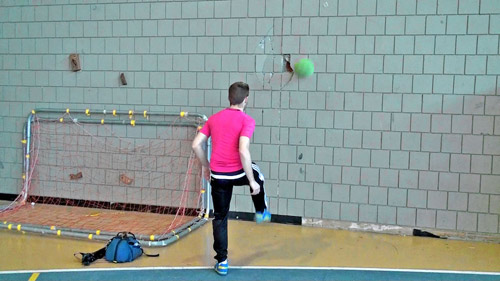WASHINGTON, June 5, 2014 (IPS) – Immigrant parents in the United States face serious challenges accessing early elementary programmes for their children, advocates here are warning.
The centrality of parents in early childhood education is undisputed, yet a new report from the Migration Policy Institute (MPI), a Washington-based think tank, highlights a broad lack of programming for immigrant parents. The report lists gaps in translation services as well as cultural and systems knowledge for parents as primary obstacles, and notes significant potential impacts on children’s education.
“With one in four young children in the United States living in an immigrant family, efforts to build trust and establish meaningful two-way communication with these families is an urgent priority,” states the report, released this week.
In recent years, U.S. policymakers have increased efforts to improve early childhood education. In January 2013, for instance, President Barack Obama introduced his Plan for Early Education for all Americans, which focuses on children to age five and includes funding high-quality preschool for all low- and moderate-income children.
Yet plans like this and others often overlook the importance of supporting immigrant parents, especially those with limited English-language proficiency. MPI’s researchers warn that fast-changing demographics in the United States are making this oversight increasingly problematic.
“Immigration for the longest time had been a five-state issue, but now it’s a 40-state issue,” Margie McHugh, one of the report’s authors, said at a briefing Monday.
Of the one in four young children in the U.S. with immigrant parents, 45 percent are low-income, and their parents are twice as likely as native-born parents to have less than a high school diploma.
“This represents a significant risk factor for many young children of immigrants,” the report states, “given that maternal educational attainment is closely linked with education outcomes for children, and parental education is closely linked with family earnings and economic well-being.”
BUDGET VICTIMS
Currently, no federal programme exists to explicitly support and engage immigrant parents in the United States, while ongoing budget battles in Washington are impacting on initiatives that have partially filled this gap.
The government has cut funds for Head Start, a federal programme that provides public preschool and health services to low-income children. And Even Start, a federal family literacy programme that integrated adult literacy with parenting education, was defunded in 2010.
These cuts disproportionately affect immigrant families.
Some programmes do exist, either through private or piecemeal funding, but these advocates say these typically lack accountability standards and continuity, since funding is so fickle. Such initiatives also tend not to communicate or coordinate with one another, meaning, for instance, that programmes aimed at secondary education do not build on those for primary schooling.
Focus group participants from MPI’s study said that programmes offered very limited translation and interpretation services, and generally ignored languages other than Spanish. Some projects did offer classes to parents, but long waiting lists, inconvenient hours or lack of child care reportedly deterred parents – despite a strong desire to participate.
“I don’t go to [parent engagement] programmes like this because one time I went, and the school had me waiting for an hour, standing around and waiting for an interpreter,” one parent told MPI researchers. “I was so tired of waiting – I have no idea what they told me in the end and they didn’t help me at all.”
Even when translation services are provided or parents speak English, understanding teachers or school materials requires a substantial understanding of the U.S. education lexicon and culture.
One federal project, Promise Neighborhoods, is funding a pilot programme specifically geared towards immigrant parents in a neighbourhood near Washington.
“In the majority of the families we work with, the parents are trying to be deeply engaged in their children’s lives,” Eliza Leighton, the programme’s director, told IPS.
“Many parents came to this country to make sure their kids have access to quality education, yet when they arrive they find there’s very limited information available for them.”
The lack of information leaves parents unaware of available resources and also leaves them in the dark about early childhood development.
“For example, many parents work under the misconception that they should only read to their child in English – and if it’s not in English, then they shouldn’t read at all,” Leighton says. “That’s not true. It’s wonderful to read to your child, even if it’s not in English.”
The pilot project has four main components. First are “parent promoters”, each of whom has about 50 families to connect to the community. Second is a 13-week parent and teacher class, conducted mostly in Spanish, to teach parents how to support their child’s development.
The third component is a series of community events to build a support community for immigrant parents. Finally, the last part is a class to educate teachers on the linguistic and cultural needs of their students and families.
If the programme is successful, supporters say it could be expanded throughout the country.
DATA NEEDED
MPI notes that increasing the collection of pertinent data would increase the visibility of immigrant parents for school administrators, especially parents who speak a language other than Spanish.
Currently, from the school to federal level, data collection begins in kindergarten. But more information could help teachers better understand the needs of their students and help policymakers hear demands for programming catered to immigrant parents.
Of course, programmes to educate immigrant parents overlap with the field of adult education, like adult literacy classes. However, few federal adult-education programmes meet the needs of parents that lack English-language proficiency.
“Right now, adult education programmes are only meeting about four percent of needs,” McHugh said.
“The other dynamic … is that a lot of existing capacity is dedicated to people trying to get their [high school degrees] and post-secondary degrees. And that is a desired outcome, but that type of programme does not meet the needs of immigrant parents.”
The report also stresses the need for non-traditional family literacy programmes or adult education programmes, but structured in such a way that they can wrap together cultural knowledge, language and literacy, and systems knowledge.
“Partnerships with families are a bedrock for strong early childhood development,” said Miriam Calderon, a former senior policy analyst for early learning at the White House.
Calderon highlighted the report’s recommendation to institute a federal pilot programme that can draw from the lessons of Even Start, both from what worked on the ground and also why support for the programme ultimately declined.
“Policies regarding family engagement … lack teeth and are largely misused,” said Calderon.

























